的是如何使用NvM存儲(chǔ)服務(wù),以及使用過(guò)程中出現(xiàn)Error后如何快速定位和分析問(wèn)題。NvM服務(wù)的使用可以參考 >一文,本文就來(lái)自低向上的分析AUTOSAR架構(gòu)下存儲(chǔ)協(xié)議棧的Error處理機(jī)制,希望能幫助
2023-09-04 09:53:28 839
839 
Protues和keil聯(lián)調(diào)的時(shí)候出現(xiàn)錯(cuò)誤“*** error 10: Syntax error”,不知道是什么原因,聯(lián)調(diào)的設(shè)置應(yīng)該沒有問(wèn)題,這個(gè)會(huì)不會(huì)是程序問(wèn)題?
2016-03-15 00:52:42
A simulation error has occurred. Would you like to run the Convergence Assistant to attempt
2013-02-27 10:53:46
A|=B 是啥意思 誰(shuí)知道
2013-04-30 20:54:01
我正在嘗試在 B-L4S5I-IOT01A 開發(fā)板上從 X-CUBE-AWS 運(yùn)行 aws_demos 項(xiàng)目。我已經(jīng)成功編程并運(yùn)行了配置映像。我已經(jīng)成功構(gòu)建了 aws_demos 項(xiàng)目,并且在
2023-01-30 08:17:44
B2961A 現(xiàn)金回收 Keysight B2961A 歐陽(yáng)R:***QQ:734645067回收工廠或個(gè)人、庫(kù)存閑置、二手儀器及附件。長(zhǎng)期 專業(yè)銷售、維修、回收 高頻 二手儀器。溫馨提示:如果您
2021-08-04 11:11:33
B2981A 現(xiàn)金回收 Agilent B2981A 歐陽(yáng)R:***QQ:734645067回收工廠或個(gè)人、庫(kù)存閑置、二手儀器及附件。長(zhǎng)期 專業(yè)銷售、維修、回收 高頻 二手儀器。溫馨提示:如果您
2021-08-06 16:17:03
Error (10887): VHDL error at Display.vhd(61): simplified sensitivity list is not supported
2017-11-07 20:28:10
;, line 216: Error: A1185E: Symbol missingCould you help solve it ? thanks.
2021-06-07 17:03:01
be defined in a segment definition option (-Z, -b or -P) 該怎么解決
2018-05-22 06:04:38
我通過(guò)RS232與E3631A電源進(jìn)行通信,每當(dāng)我發(fā)送任何查詢時(shí),電源都會(huì)給出錯(cuò)誤-410。我嘗試在查詢之前發(fā)送重置命令(* RST)(每個(gè)用戶手冊(cè)第121頁(yè)),但它仍然不接受。電源響應(yīng)所有命令都很
2018-12-18 16:13:50
。 Connection Expert會(huì)驗(yàn)證并找到幾種儀器。 E4407B有GPIB地址18.當(dāng)我發(fā)送* IDN時(shí)?命令,我得到錯(cuò)誤! VI_ERROR_TMO:發(fā)生超時(shí)Visa ErrorCode
2019-03-05 16:38:30
請(qǐng)問(wèn)大蝦們EIA-422-B與EIA-422-A是什么關(guān)系?A與B有什么不同?
2014-02-27 16:42:00
LOCK_BITS_ADDRESS_SPACE must be defined in a segment definition option (-Z, -b or -P)”,請(qǐng)問(wèn)這是為什么?編譯前什么都沒修改和設(shè)置!
2018-08-10 10:15:03
任何人都可以詳細(xì)說(shuō)明4263A和4263B型號(hào)之間的區(qū)別嗎?我正在考慮買一個(gè)并且有A和B型號(hào)的報(bào)價(jià)但是B的成本要高得多,所以我試著弄清楚它是否物有所值! 以上來(lái)自于谷歌翻譯 以下為原文Can
2019-03-06 07:20:34
M15088A/B(B)點(diǎn)陣的引腳不是有規(guī)則排布的,我在網(wǎng)上查的上面一排為 HG2A4FDI 下面一排為 57BC8E63 (在器件正面由左向右的順序)怎么沒有1啊?正面是點(diǎn)陣屏對(duì)著我們,還是引腳
2012-11-17 15:27:09
kind. Typically a set of curve data will be about 4122 bytes long, with most of the bytes being
2018-10-25 11:00:58
我的U1271A在發(fā)出嗶嗶聲的同時(shí)間歇性地顯示“A-Error”信息。它使得萬(wàn)用表在發(fā)生時(shí)無(wú)用,到目前為止它只在我需要它時(shí)才發(fā)生在現(xiàn)場(chǎng)。試圖在家里重現(xiàn)它沒有成功..我沒有在用戶手冊(cè)中找到它,也沒有在
2018-10-22 16:06:03
output characteristics curve? I have carefully read the user manual and data sheets for the U3606B
2018-11-30 14:45:19
:255.255.255.0 eth=00:0c:0c:A0:02:b4 mem=48M cmemk.phys_start=0x83000000 cmemk.phys_end=0x88000000
2019-08-29 14:39:13
異常VEE程序重新安裝,但問(wèn)題沒有解決。任何人都可以幫助我嗎?謝謝你Andrei 以上來(lái)自于谷歌翻譯 以下為原文hi, I′m using VEE Pro 9.2 program, with a
2019-06-21 08:12:30
,其次為pFA。eFA通常為非破壞性的,包括I-V Curve測(cè)試,Bitmap,失效定位(Thermal/EMMI/OBIRCH)。pFA通常為破壞性的,包括wire cutting
2016-07-22 12:49:00
F:\CS.ASM(2): error A9: SYNTAX ERROR F:\CS.ASM(2): error A3: ILLEGAL CHARACTER F:\CS.ASM(2): error
2016-05-23 19:35:47
'Target 1'compiling main.c...main.c(16): error:#18: expected a ")" IPOH_MODER&=~(3
2017-07-29 13:34:21
:0.01:19;yy=a*exp(b*xx);plot(x,y,'o',xx,yy)畫的圖形為:3.出入控制命令cftool進(jìn)入curv fitting tool Xdata選擇x,Ydata選擇y
2011-11-03 15:53:25
型號(hào)34970A。開機(jī)后,連接RS232接口,一碰就出現(xiàn)rmt error,并且還滴滴報(bào)警。求問(wèn)該如何解決
2021-07-21 20:47:31
' is a one dimensional vector with 1 elements. Error in port widths or dimensions. Output port 1
2017-04-26 14:41:56
兩個(gè)485之間的相互通信 怎么是A--AB--B連接
2019-10-23 00:45:40
= 0; }} The problem is that now I get this error:interrupt_manager.c:17: error: (255) not a member
2018-08-29 14:41:55
儀器租售Tektronix 371A TEK 371B/Tektronix 370A TEK 370B手機(jī):13570862711 銷售部:譚春會(huì)(銷售工程師)手機(jī):13242054800QQ
2008-11-03 16:20:51
and N4693A-00F with 85057B and it stops almost immediately with the follwoing error message: Run-time error
2018-11-28 10:49:09
started.
CMEM Error: getPool: Failed to get a pool fitting a size 1310720
2018-06-22 05:20:51
我使用的是英特爾服務(wù)器主板S1200V3RPS。這個(gè)板有4個(gè)內(nèi)存插槽即。通道A具有A1和A2槽,通道B具有B1和B2槽。當(dāng)我在B1和B2插槽或僅B1插槽中插入ram棒時(shí),我的系統(tǒng)工作正常。但是如果我
2018-10-16 11:43:45
在DSP28335內(nèi)部燒了兩個(gè)程序A和B,上電啟動(dòng)是可以從A跳到B,從B也可以跳到A,但是此時(shí)不能再跳轉(zhuǎn)到B了,哪位大俠知道,謝謝!
2018-05-06 16:21:56
for this error. Please let us know if any additional information is required.Regards Mahesh C #flexraycommunication-driver-development-for-spc564a80b4
2019-07-05 13:52:37
I-V Curve 電特性量測(cè)原理是 ,利用自動(dòng)曲線追縱儀電特性量測(cè)的方式,快速計(jì)算阻值,藉此確認(rèn)各腳位(Pin)關(guān)系并實(shí)時(shí)篩檢出異常(Open / Short),另可產(chǎn)出曲線圖文件。 提供DC組件
2018-08-24 09:02:36
交換a、b的值在C語(yǔ)言的學(xué)習(xí)中是很常見的問(wèn)題。最常用的方法就是引入一個(gè)中間變量當(dāng)做中間介質(zhì)來(lái)交換a、b的值。代碼如下:voidchange_ab(int*a,int*b){...
2022-02-28 10:02:16
嗨,我想用Labview用82357B讀取和控制3458A,當(dāng)我與PC和3458A連接時(shí),82357B的LED正常顯示,我用IO庫(kù)找到3458A,只找到3458A的GPIB地址,但找不到3458A
2019-06-25 06:24:35
比如說(shuō)a[1:0]b[1:0]如果a是10的話b就是01也就是說(shuō)b是a的一半舉個(gè)例子assign b[1:0]=a[1:0]/2; 這樣是不可以的 我應(yīng)該怎么才能實(shí)現(xiàn)這個(gè)a和b的值都是不確定的怎樣才可以實(shí)現(xiàn)b是a的一半
2014-12-30 09:32:15
函數(shù)進(jìn)行擬合,形成上下包絡(luò)線,目前我僅僅能將仿真圖形導(dǎo)入curve fitting tool界面,方法設(shè)置是:interpolant linear,可是沒有上下包絡(luò)線出現(xiàn),小弟感激不盡啊!!
2014-08-09 19:10:04
我想在83732A上改裝高穩(wěn)定性時(shí)基選項(xiàng)1E5,我正在尋找適用的服務(wù)說(shuō)明/安裝手冊(cè)。在Agilent網(wǎng)站上,83752B清掃器上只有一個(gè)安裝手冊(cè),我已經(jīng)看到,安裝硬件后必須在內(nèi)存中輸入一些值。謝謝
2019-07-17 15:54:37
of errors.**** Build Finished ****.sa文件內(nèi)容如下:.global _add2_add2:.cproc a, b.reg sumADD a, b, sum.return
2018-06-19 05:12:50
你好,我想要捕捉Error變量,但似乎現(xiàn)在有辦法做到這一點(diǎn)(希望你們證明我錯(cuò)了!),這就是我所做的:輸出@File使用val $(len(WriteString $))&amp ;“一個(gè)
2019-10-15 08:29:09
four-quadrant operation. Now I want to measure an IV-curve of a solar cell (I ~sc~ about 9 A) using LabVIEW.
2018-09-19 16:47:30
and error messages to a cell phone to save the cost of adding an LCD display and provide remote access
2018-09-26 17:18:41
嗨,有沒有辦法找到E5052B相位噪聲測(cè)量模式中使用的實(shí)際RBW。手動(dòng)指定RBW在相位噪聲測(cè)量模式下設(shè)置為“AUTO”。僅供參考我在處理156.25MHz載波頻率,其相位噪聲曲線在
2018-09-18 16:05:07
measurement techniques. Curve Fitting and full 3D animation are included in this product.
2019-06-06 14:51:19
求解程序中第69,70行,為什么先寫b=_cror_(b,1);再寫a=_crol_(a,1);a b值都可以變化,而先寫a=_crol_(a,1); 再寫b=_cror_(b,1);b的值卻不變呢???
2014-03-23 13:51:00
pulsed weep mode' with B1500A, there was an error message "I/V Pulsed Sweep needs exactly one
2018-10-29 15:51:08
我使用HP6060B來(lái)表征鋰離子電池的放電曲線。當(dāng)在恒定電流模式下將其設(shè)置為所需的負(fù)載電流時(shí),我看到正確的電流測(cè)量值為0.5A,但是我沒有在LCD上或通過(guò)GPIB接口獲得正確的電壓讀數(shù)。它僅顯示
2018-11-02 09:52:25
請(qǐng)問(wèn)AD598中(A-B)/(A+B)這一步中A和B是直流信號(hào)還是交流信號(hào)?
2023-11-14 08:07:30
tell me ifESG "A" Series Service Support Software (ESG_A Version A04.31) works with 82357B USB/GPIB interface?Thanks附件error.jpg29.5 KB
2019-03-05 07:18:33
請(qǐng)問(wèn)各位大俠,離子注入時(shí)有遇到做V-CURVE時(shí),出現(xiàn)倒著的拋物線嗎?急,在線等,謝謝!
2018-08-05 19:29:33
working on a simple project using XC8 1.45 with MPLABX 4.05 and have hit a problem. My project
2018-09-25 17:36:28
Bit Error Rate Testing (BERT)_Chinese.avi
分析儀的比特誤差率測(cè)試視頻,中文哦。
2008-09-09 10:24:01 30
30 V output from inputs between 4.0 V and 36 V. Low initial error and temperature drift combined with low outp
2008-11-08 12:53:32 93
93 technology development. Innovations like oscilloscopes, logicanalyzers and bit error ratio testers have enabled new, faster and more
2010-07-14 10:48:36 14
14 The Agilent 71612C Error Performance Analyzer is the ideal solution for theresearch, development
2010-07-16 22:04:33 8
8 Calculating the Error Budget in Precision Digital-to-Analog Converter (DAC) Applications
Abstract
2009-01-06 13:44:18 876
876 
Abstract: This application note explains how to configure the bit-error-rate tester (BERT
2009-04-18 11:39:25 888
888 Abstract: This application note shows how to connect our enhanced bit error-rate tester (BERT
2009-04-20 09:06:08 863
863 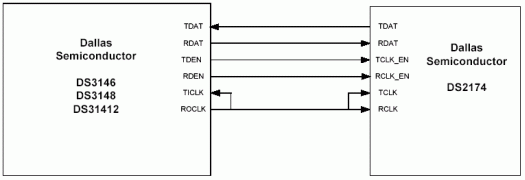
在使用電腦中有時(shí)候會(huì)遇到unknown hard error,很多人不知道unknown hard error什么意思。電腦出現(xiàn)hard error是因?yàn)槭裁矗瑄nknown hard error解決方法什么,在本內(nèi)容中都一一為大家詳解
2011-12-13 11:23:28 0
0 Error Correcting For 7bit Hamming Code.多種集合,符合熱愛PCB繪圖的學(xué)習(xí)者的胃口,喜歡的朋友下載來(lái)學(xué)習(xí)。
2016-03-21 15:26:25 0
0 《Spartan6開發(fā)中bufpll mapping error 》 最近在做Spartan6上的視頻輸出,輸出的接口是HDMI接口,要求格式是720P。
2017-02-11 11:56:04 2019
2019 publications in technical journals and conferences, use has been made of the concept of % error in Tj.
2017-04-11 10:04:59 3
3 proxy_intercept_errors
當(dāng)上游服務(wù)器響應(yīng)頭回來(lái)后,可以根據(jù)響應(yīng)狀態(tài)碼的值進(jìn)行攔截錯(cuò)誤處理,與error_page 指令相互結(jié)合。用在訪問(wèn)上游服務(wù)器出現(xiàn)錯(cuò)誤的情況下。
2018-07-28 08:28:10 5065
5065 
本文檔的主要內(nèi)容詳細(xì)介紹的是51單片機(jī)的warning和error的程序免費(fèi)下載。
2019-08-28 17:29:00 0
0 不過(guò)因?yàn)閿?shù)據(jù)的原因,導(dǎo)致文章中的腳本文件不能適合每一組的實(shí)驗(yàn)數(shù)據(jù),對(duì)文件做一定的修改是必須的,最后利用 Curve Fitting Toolbox 對(duì)實(shí)驗(yàn)數(shù)據(jù)進(jìn)行擬合,就能夠得到比較準(zhǔn)確的擬合參數(shù),也可以得到非常漂亮的曲線,最后利用擬合出來(lái)的輪胎數(shù)據(jù)分析整車動(dòng)態(tài)性能,也可以用于車輛動(dòng)態(tài)控制的仿真。
2019-09-11 10:44:02 4550
4550 
在此基礎(chǔ)上,他們開發(fā)了DeepSqueak軟件包和MATLAB圖形用戶界面。DeepSqueak使用了Computer Vision System Toolbox(計(jì)算機(jī)視覺系統(tǒng)工具箱)、Curve
2019-09-11 11:40:18 2719
2719 STM32F1的ADC2如何使用DMA功能,USART過(guò)載錯(cuò)誤Overrun error
2020-03-14 14:42:01 7118
7118 
“由領(lǐng)先的工業(yè)設(shè)計(jì)師創(chuàng)建并通過(guò)我們的全球網(wǎng)絡(luò)連接,Curve的多功能性使其成為跟蹤最重要的事物,無(wú)縫融入日常生活的理想方式。”
2020-07-20 09:25:15 2338
2338 RTD Configurator and Error Budget Calculator
2021-01-27 18:36:18 17
17 季豐電子新增加高壓IV Curve和高壓熱點(diǎn)定位,主要應(yīng)用在MOS,SiC,IGBT等高壓產(chǎn)品的失效分析,IV Curve掃描電壓范圍在±3000V,通過(guò)IV Curve好壞品對(duì)比,我們可協(xié)助判斷
2021-10-15 11:50:17 3811
3811 
出現(xiàn)Error: Unable to reset MCU!的解決方法
2021-10-25 21:06:08 14
14 錯(cuò)誤信息:error: #40: expected an identifier原因1:是命名重疊了, 比如在stm32f10x.h中有如下定義typedef enum {ERROR
2021-11-13 13:21:03 9
9 1、錯(cuò)誤示例linking...*** ERROR L104: MULTIPLE PUBLIC DEFINITIONS SYMBOL: BUSY MODULE: main.obj
2021-11-21 16:06:05 16
16 Keil 5出現(xiàn)Error: L6218E: Undefined symbol解決方法
2021-11-23 17:21:39 23
23 Keil LX51 Error L104Error L104處理Error L104處理8051系列單片機(jī)總體來(lái)說(shuō)內(nèi)存空間小, 在需要數(shù)據(jù)轉(zhuǎn)發(fā)的編程中為了更容易掌控內(nèi)存分配和重用, 通常多用全局變量
2021-11-29 13:21:07 8
8 【MCU】MDK錯(cuò)誤:error in include chain (cmsis_armcc.h):expected identifier or ‘(‘
2021-11-30 19:51:06 17
17 這個(gè)意思是說(shuō)ST設(shè)備不是正版的,連接失敗,但它確實(shí)給你燒了程序,所以可以忽略這個(gè)問(wèn)題,但這個(gè)error有點(diǎn)煩,參考以下步驟去掉。
2021-12-01 13:51:07 13
13 Altium designer ERROR系列:GND contains Output Pin and Power Pin ob
2021-12-01 18:36:07 6
6 11.c(14): error C231: ‘InitTimer0’: redefinition今天寫中斷秒閃單片機(jī)功能時(shí)出現(xiàn)這個(gè)錯(cuò)誤最后解決方法是把主函數(shù)放在調(diào)用函數(shù)的后面·
2021-12-02 20:51:10 1
1 在編譯程序是報(bào)錯(cuò):…\OBJ\test_program.axf: Error: L6915E: Library reports error: __use_no_semihosting was requested but a semihosting fputc was li
2021-12-03 09:51:08 9
9 ??今天移植程序后,編譯時(shí),又有"Error[Li005]: no definition for"的報(bào)錯(cuò),之前也遇到過(guò)也解決了,今天準(zhǔn)備正式記錄一下,這個(gè)錯(cuò)誤出現(xiàn)的原因與解決辦法
2021-12-03 15:21:05 3
3 STM32CubeIDE安裝-NSIS Error問(wèn)題
2021-12-03 21:06:09 17
17 ./oschina_soft/curve.zip
2022-05-16 09:41:26 1
1 【GCC編譯】運(yùn)行編譯后的程序報(bào)錯(cuò) error while loading shared libraries: lib*.so: cannot open shared object file
2022-08-26 13:14:02 2867
2867 
問(wèn):我得到一個(gè)信息"Fixup error referencing ...";或者是"Fixup error in expression ..." 這究竟是
2023-01-22 16:21:00 603
603 ?當(dāng)程序發(fā)生故障時(shí),正常情況下采用人為干預(yù),不可避免會(huì)影響生產(chǎn)效率,機(jī)器人編程時(shí),可以通過(guò)Error Handler 這項(xiàng)功能來(lái)自動(dòng)處理一些故障,提高生產(chǎn)效率。
2023-05-26 09:23:19 568
568 
在應(yīng)該收到 ACK 信號(hào)的時(shí)候沒有收到 ACK 信號(hào),i2c controller 就會(huì)產(chǎn)生一個(gè) ACK error 的中斷,告訴 i2cdriver 發(fā)生了 ACK error。通常
2023-07-22 14:39:44 897
897 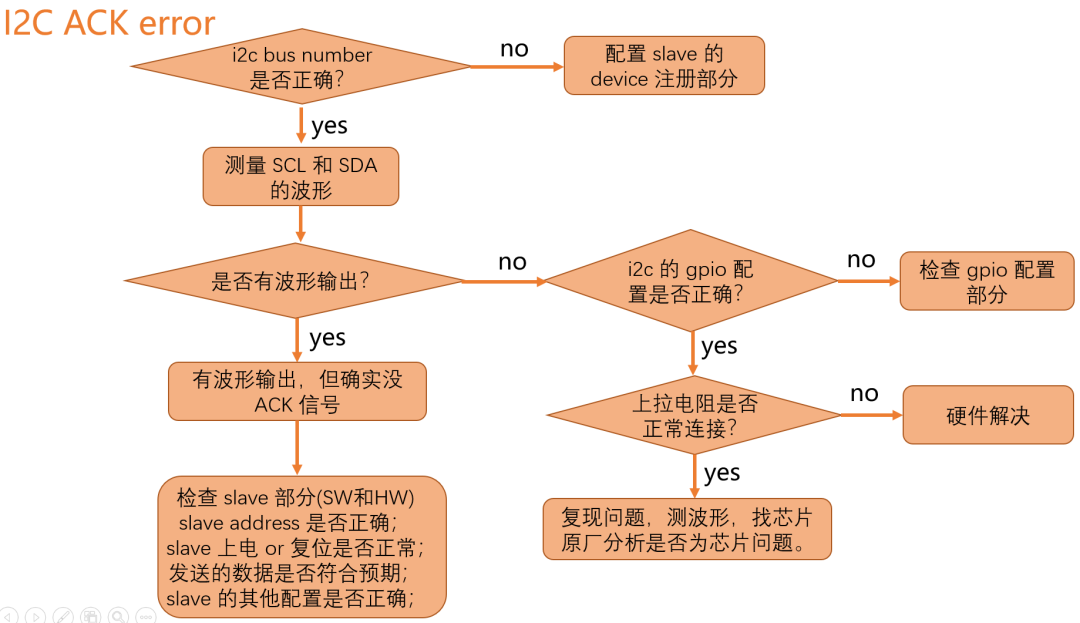
為 Linearity Curve。據(jù)悉, Vectornator現(xiàn)正更名為L(zhǎng)inearity Curve,從而提高軟件性能,以求為平面廣告設(shè)計(jì)領(lǐng)域帶來(lái)技術(shù)革新。 事實(shí)上,Linearity Curve
2023-07-31 11:28:14 913
913 為什么電壓探頭會(huì)有降額曲線(Derating Curve)指標(biāo),它的意義是什么呢?
2023-09-08 15:45:10 306
306 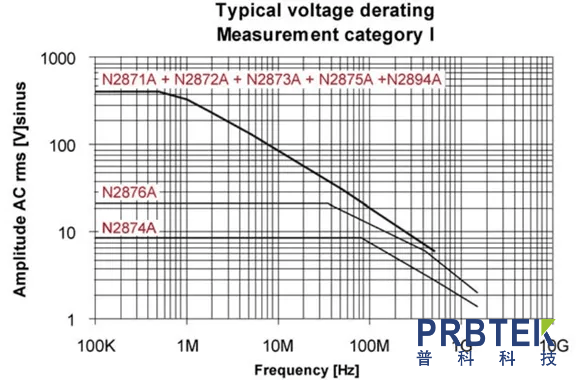
正在加载...
 = DS1631 bath measurements).
= DS1631 bath measurements).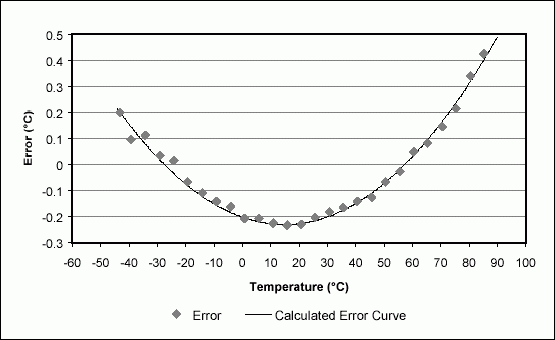


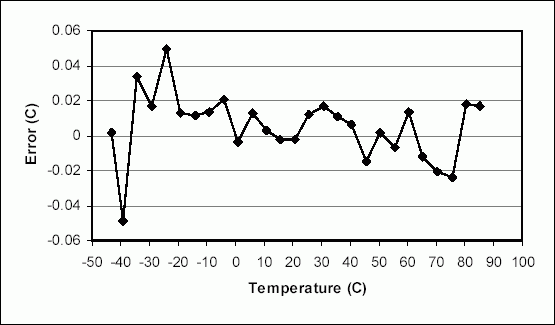
 電子發(fā)燒友App
電子發(fā)燒友App































評(píng)論